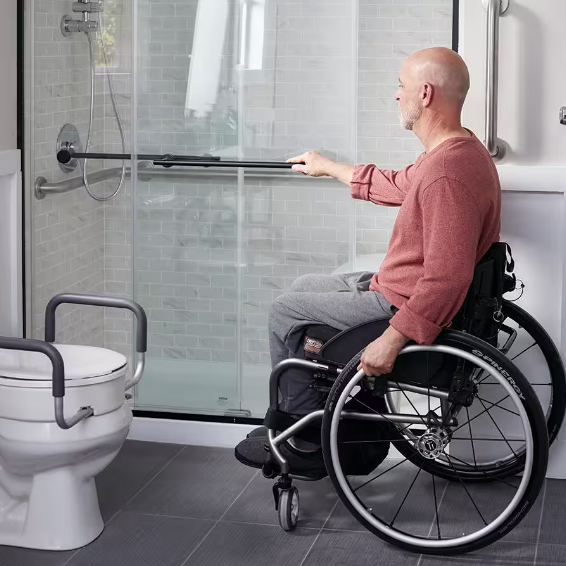As an indispensable fixture in the bathroom vanity, the choice of bathroom vanity countertop material directly impacts daily comfort and the overall bathroom design. Faced with a dazzling array of bathroom countertops on the market, how do you choose? Today, we provide a comprehensive analysis of the pros and cons of mainstream bathroom vanity tops to help you make an informed decision.
1. Comprehensive Analysis of Common Bathroom Countertop Materials
1.1 Ceramic Countertops
Ceramic vanity countertops are one of the most common bathroom surface materials, often designed integrally with ceramic basins.

- Advantages: Ceramic is highly durable, has low water absorption, and a smooth, glossy surface that is easy to clean and highly resistant to scrubbing. It withstands high temperatures well, offers excellent waterproofing and moisture resistance, making it ideal for humid bathroom environments, and is cost-effective.
- Disadvantages: Ceramic countertops cannot be customized. Due to potential deformation during firing, the surface may lack perfect flatness. They are relatively brittle and prone to cracking under impact. They also lack the unique veining of natural stone.
1.2 Natural Stone (Marble/Granite) Countertops
Marble bathroom countertops feature natural veining, high aesthetic appeal, and are conducive to creating a luxurious, grand style.

- Advantages: Naturally beautiful with unique, varied veining that evokes a sense of luxury and elegance. High hardness, resistant to wear and scratches, and high heat resistance.
- Disadvantages: Prone to staining; the surface has tiny pores that can absorb liquids, leading to discoloration or stains. High maintenance requires regular sealing. Expensive.
Granite vanity countertops are another option in the natural stone category.
- Advantages: Extremely durable, high hardness, resistant to scratches, abrasion, and impact. High stain resistance due to a dense surface with low water absorption.
- Disadvantages: Relatively high cost. Very heavy, requiring consideration of structural support during installation.
1.3 Engineered Stone Countertops
Quartz bathroom countertops (engineered stone) are made from a base of natural stone mixed with resins and some recycled materials.

- Advantages: Diverse choices in colors and textures, capable of mimicking the appearance of natural stone. High stain resistance; the non-porous surface resists water absorption and staining. Abrasion and scratch-resistant, with strong moisture and antimicrobial resistance.
- Disadvantages: Poor heat resistance; prolonged contact with hot items can damage the surface. Vulnerable to scratches from hard objects. Relatively high price.
1.4 Sintered Stone (Slab) Countertops
Sintered stone countertops have become a highly sought-after new material in recent years.

- Advantages: High aesthetic appeal with diverse styles and rich textures. High hardness, resistant to wear, scratches, impact, and deformation. Stain and liquid-resistant, easy to clean and maintain. Fireproof and waterproof.
- Disadvantages: Expensive. Variable quality on the market makes selection challenging.
1.5 Other Countertop Materials
Glass countertops: Visually appealing with rich colors and a modern feel, but prone to water scale buildup and extremely difficult to clean, making them impractical.
Solid wood countertops: Typically made from solid wood base materials treated with multiple waterproofing processes. They offer natural wood grain and a pleasant aroma, with aesthetics and eco-friendliness as main advantages. However, they are generally not cheap, and without proper bathroom ventilation, they are susceptible to moisture damage.
Laminated countertops: Composed of a thin plastic surface pressure-bonded to a particleboard or plywood substrate. Affordable, durable, waterproof, and easy to clean. However, laminate tends to wear thin or dull over time. If damaged, it cannot be repaired, and the entire countertop usually needs replacement.

2. Comparative Table of Material Properties
For a more intuitive understanding of the performance differences among various vanity countertop materials, here is a detailed comparison table:

3. How to Choose the Most Suitable Bathroom Countertop Material
3.1 Based on Usage Needs
Prioritize stain and moisture resistance: Bathrooms are humid; core needs are moisture and stain resistance. Consider ceramic vanity tops, quartz, or sintered stone.
Focus on durability: If long-lasting performance is key, granite countertops and engineered quartz are excellent choices.
Emphasis on easy cleaning: Smooth, non-porous materials like ceramic vanity tops, quartz, and sintered stone are easier to clean and maintain.
3.2 Based on Budget
Limited budget: Ceramic countertops offer good value; laminate vanity tops are affordable.
Ample budget: Consider high-end granite, marble, or sintered stone, which offer luxurious appearance but at a higher cost.
3.3 Based on Decor Style
Modern minimalist style: Engineered quartz countertops, sintered stone, or glass countertops integrate well.
Classical luxury style: Natural marble or granite countertops provide a sense of elegance and opulence.
3.4 Based on Household Composition
Families with elderly or children: Avoid fragile materials like glass and materials with insufficient eco-friendliness like some PVC.
Larger households: Choose materials that are wear-resistant, scratch-resistant, and easy to clean, such as quartz or sintered stone.
4. Practical Tips for Selection
When selecting a bathroom vanity countertop, you can assess material quality through simple methods:
Examine the surface structure: A fine, even structure indicates better quality; a coarse, uneven structure suggests poorer quality.
Tap and listen: Gently tap the countertop; a clear, crisp sound indicates good quality, while a dull, rough sound may suggest internal flaws or cracks.
Test stain resistance: Place a drop of ink on the back of the stone. If it spreads quickly, the internal structure is loose and quality is poorer; if it remains contained, quality is better.
Conclusion
Choosing the right bathroom vanity top requires a comprehensive consideration of factors like moisture resistance, durability, aesthetics, and budget. There is no single best material, only the most suitable one for your specific needs. We hope this analysis helps you find the perfect bathroom countertop among the many options, creating a bathroom space that is both beautiful and functional.
Regardless of the countertop material chosen, regular maintenance and care are crucial for extending the vanity’s lifespan. Proper cleaning methods and appropriate maintenance will keep your bathroom vanity top looking new for years, maintaining its beauty and functionality over the long term.





